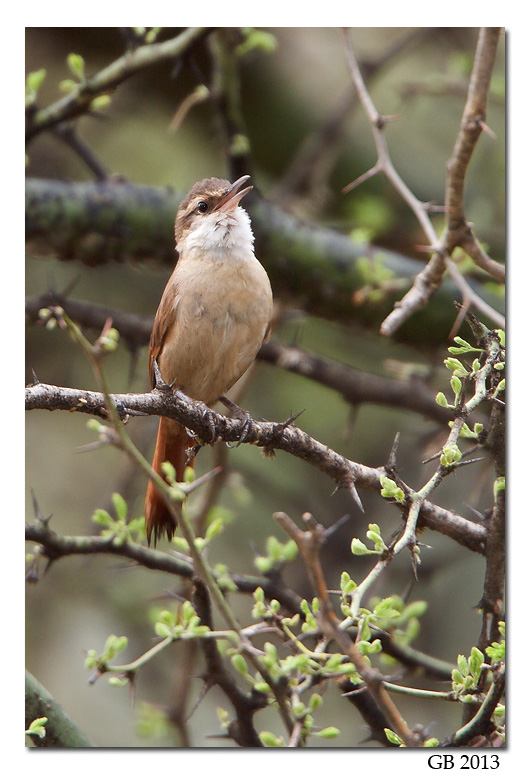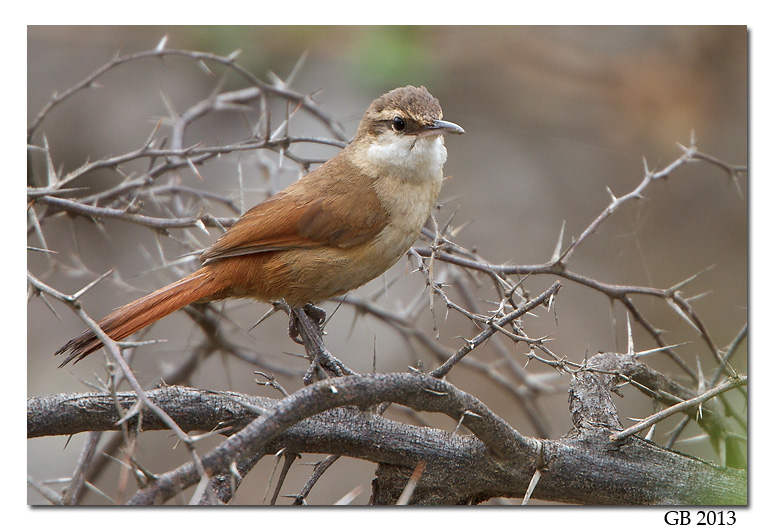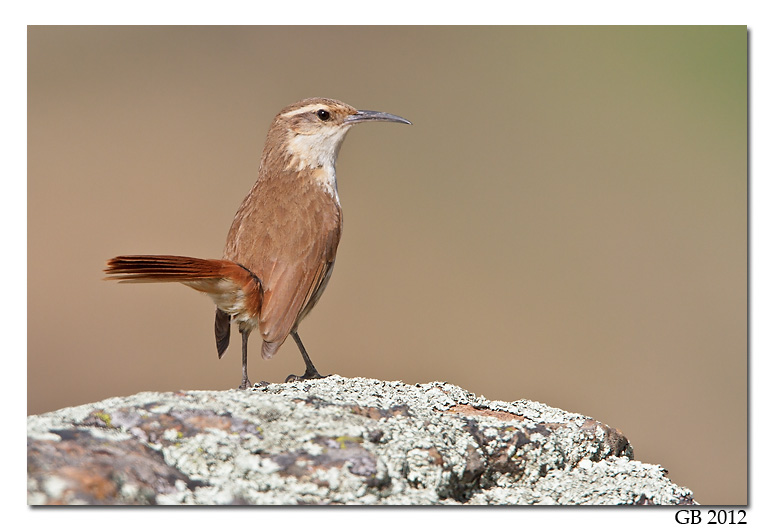
Ochetorhynchus harterti
SUBFAMILY
Furnariinae
TAXONOMY
Ochetorhynchus harterti Berlepsch, 1892.
OTHER COMMON NAMES
French: Upucerthie de Bolivie; German: Braunkappen-Erdhacker;
Spanish: Bandurrita Boliviana.
PHYSICAL CHARACTERISTICS
Body length is about 6 in (17 cm). Bill is rather long, somewhat
downcurved, and pointed. The tail is long. The sexes are
similar. Overall coloration is dull brown on the back, with a
lighter belly, white throat, and a tan stripe over the eye.
DISTRIBUTION
A local (or endemic) species of the Andean region of southern
Bolivia.
HABITAT
Occurs in foothills and lower slopes of Andean valleys within
its limited range. Occurs near edges of deciduous woods and in
dry shrubby habitats. Often occurs in microhabitats with a high
density of terrestrial bromeliads. Occurs within an altitudinal
range of 4,700–9,700 ft (1,430–2,960 m).
BEHAVIOR
A non-migratory species. Usually occurs singly or in pairs. Defends
a breeding territory. Tends to skulk among cover on the
ground or in dense near-ground cover. Often cocks its long tail
erect. The song is a series of loud, piercing, steady or descending
notes.
FEEDING ECOLOGY AND DIET
Forages in low shrubs and trees and on the ground for insects
and other small invertebrates.
REPRODUCTIVE BIOLOGY
The nest has not yet been observed, but a closely related
species builds a nest of twigs within a natural tree-hollow or in
a clump of rocks, or sometimes in an ‘oven’ abandoned by another
species of ovenbird. Both the male and female incubate
the eggs and rear the nestlings.
CONSERVATION STATUS
An endemic and rather uncommon species, but not considered
at risk.
SIGNIFICANCE TO HUMANS
None known.
Other popular Animals
Photo Gallery of - Bolivian earthcreeper




 Animalia Life
Animalia Life